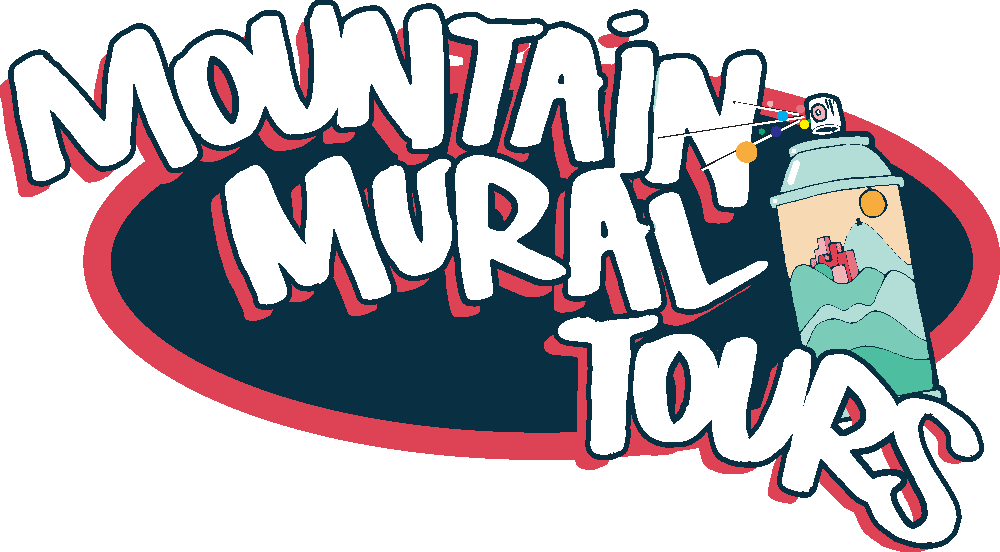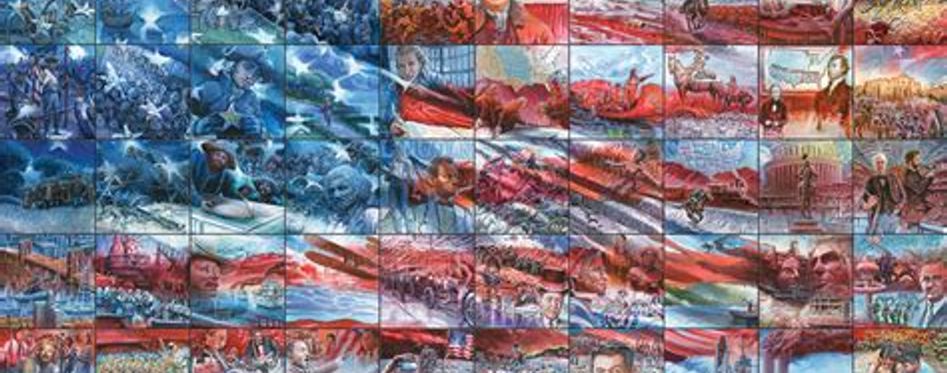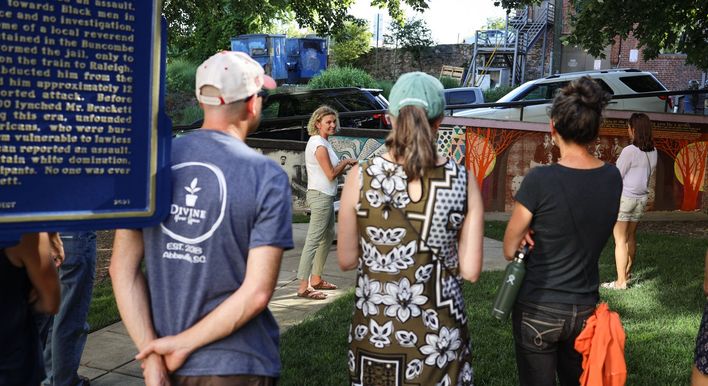Murals in the United States are a vibrant reflection of culture, history, and creativity. From the bustling streets of New York City to the artistic alleys of San Francisco, the country boasts an array of breathtaking murals that captivate viewers. Let’s explore some of the most iconic and noteworthy murals across the US.

A tour we think you'll love
1.The Bowery Wall, New York City: This iconic mural space in Manhattan has seen numerous masterpieces over the years. From the works of acclaimed artists like Keith Haring to newer creations by contemporary muralists. In this iteration JR returned to the Houston Bowery Wall with a TIME Magazine collaboration addressing gun violence. (The publication also also placed the artist on its list of 100 most influential people that year.) To prepare for the new Bowery Wall Mural, JR traveled to St. Louis, Washington DC and Dallas to capture arguments and counterarguments on the issue. He spoke to 245 people with differing points of view, then created a black and white composite of all those interviewed to create an image evoking a debate. The mural made the cover of TIME Magazine for November 2018, which was a double issue on gun violence.The Bowery Wall stands as a living canvas, showcasing the evolution of street art.

2. The Great Wall of Los Angeles, California: Stretching half a mile, this mural narrates the history of California through colorful and detailed illustrations. Created by Judith Baca and her team of artists, this monumental artwork The Great Wall of Los Angeles (also known as The History of California) is a half-mile long mural depicting the history of California through images of significant figures and historic events from diverse and traditionally marginalized communities.is arranged in panels with compositions that blend into each other, comprising six sections with 86 titled segments. Sections are usually organized by decade. Segments within each decade-specific section depict discrete historical events or important figures from the decade. The composition of the earliest sections from 1976 was supervised by multiple artists. Later sections, completed between 1978 and 1984, have stronger visual coherence and were under the design supervision of a single artist, Judith F. Baca. Segments are listed with titles as they appear on the mural. The mural was painted during summers between 1974 and 1984.

3. Wynwood Walls, Miami: Wynwood Walls is a curated collection of murals by artists from around the globe. This outdoor museum is a testament to the transformative power of art in a neighborhood. conceived by the late urban developer Tony Goldman in 2009.[5] His idea was to revitalize the neighborhood by turning warehouses into works of artIt’s a dynamic showcase of diverse styles and themes, attracting art enthusiasts and tourists alike.Unfortunately often that means the neighborhood is gentrified which was true for Wynwood. It was once called little San Juan or El Barrio because of the large population of Puerto Rican immigrants which have now been priced out of the neighborhood.

4. Clarion Alley Murals, San Francisco:
The Mission of Clarion Alley Mural Project (CAMP) is to support and produce socially engaged and aesthetically innovative public art, locally and globally as a grassroots artist-run organization based in San Francisco’s Mission District. CAMP is a community, a public space, and an organizing force that uses public art (murals, street art, performance art, dance, poster projects, literary events) as a means for supporting social, economic, racial, and environmental justice messaging and storytelling.
Each piece tells a unique story, addressing issues ranging from gentrification to human rights, making it a hub for thought-provoking street art.

- 5. Detroit’s Eastern Market Murals, Michigan: In the heart of Detroit, the Eastern Market boasts a collection of vibrant murals, adding color and life to the bustling marketplace. These murals celebrate community, local culture, and the city’s resilience, embodying the spirit of Detroit.Some of the most moving works, though, are the ones that touch on social issues. Such pieces celebrate African-American accomplishments, pay homage to Mexican migrant workers who harvest the food that feeds so much of the U.S., and express solidarity with the Native Americans of Standing Rock.
From cityscapes to quiet neighborhoods, murals in the US offer a visual tapestry that celebrates diversity, creativity, and the power of artistic expression. They serve as not just decorations, but also as historical markers and platforms for social dialogue, making them an integral part of American culture.







